Planting tomatoes for seedlings

Every summer resident knows: in order to get a rich harvest of tomatoes, it is necessary to grow strong and healthy seedlings. That is why it is very important to follow all the rules of agricultural technology, prepare the soil and carry out pre-sowing processing of seed material. We will tell you about all the secrets and tricks of growing tomato seedlings in our review.

Seed selection
Seeds for growing seedlings are best purchased from a reputable garden center.... The stores offer the widest selection of tomato varieties, among which you can choose the one that you need. In this case, you need to focus not so much on a beautiful picture as on the botanical characteristics of the culture.
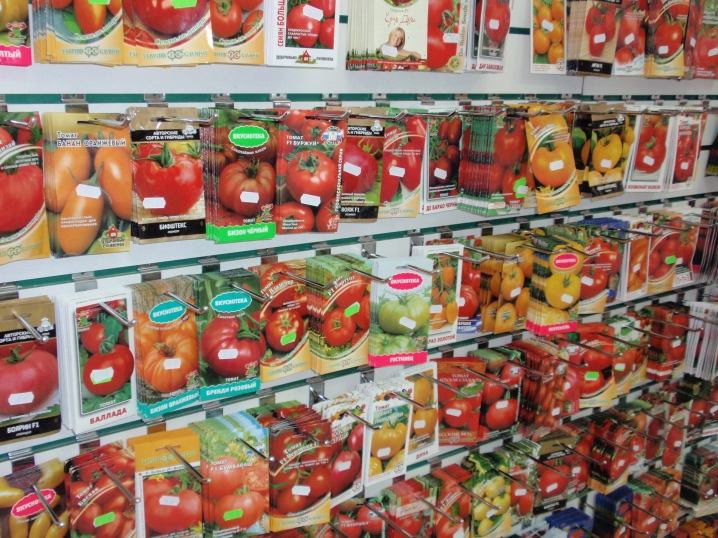
It is important that the variety is zoned and designed for the specific growing conditions that are appropriate for your region.
When cultivating tomatoes in greenhouses, you can make a choice in favor of capricious varieties, since they will be protected from sudden temperature changes, recurrent frosts and precipitation. They are less likely to encounter fungi and insect pests. For indoor use, indeterminate varieties with unlimited growth are a good solution.

If you only have an open bed, then you should make a choice in favor of varieties that are resistant to summer heat, night coolness, as well as diseases (primarily late blight). Determinant tomatoes are suitable for planting outdoors. They do not require the use of supports, moreover, they are quite unpretentious.
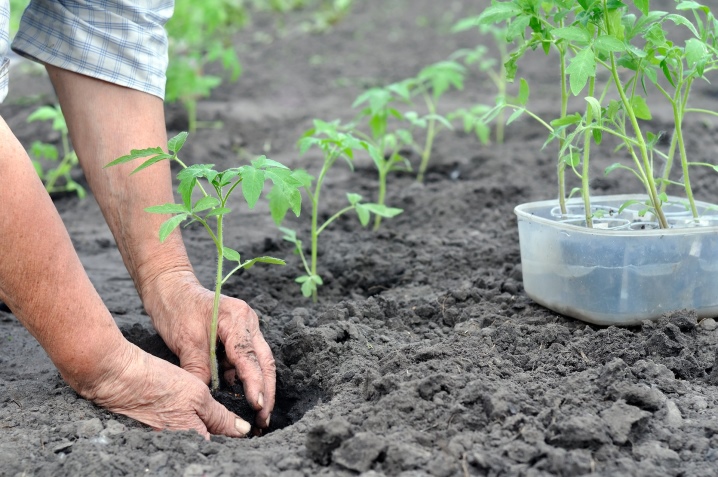
The necessary conditions
When growing tomatoes, remember that it is a light-loving culture... Therefore, when planting seedlings for seedlings in the winter months, young bushes will certainly need highlighting. Until the beginning of April, it is necessary to use artificial lamps that simulate daylight.
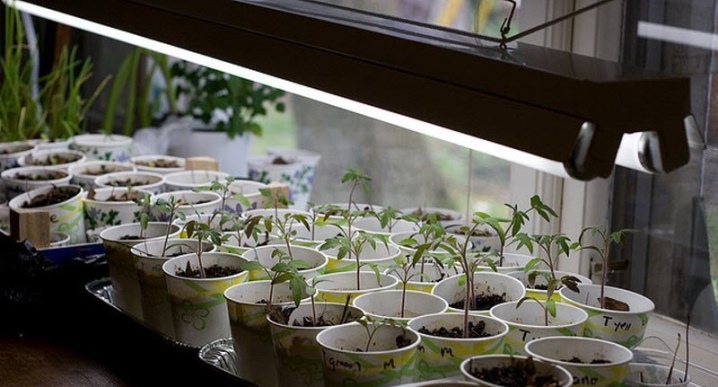
The total duration of daylight hours for tomatoes during the growth stage should correspond to 12-15 hours... At the same time, bright rays of the sun should be avoided, therefore, seedlings should not be placed on the southern and eastern windows. If there are no other places, you need to create a light shade, for example, using tulle.

Another important factor in the full growth and development of young plants is the exact observance of the optimal temperature regime. In the early stages of development, seedlings need a temperature of 15-16 degrees in the daytime, 12-13 degrees at night. A week later, the temperature is raised to 24 degrees during the day and up to 17 degrees at night.
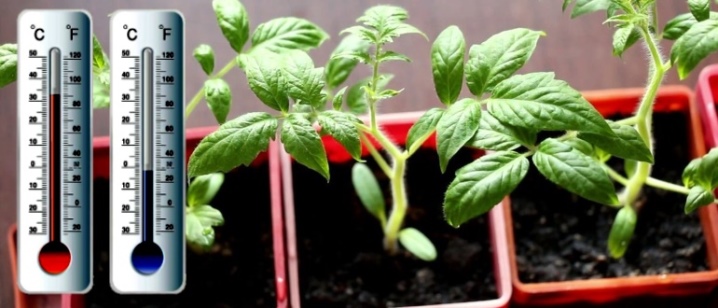
When to plant?
The timing of planting tomatoes depends on many factors. First of all, these are varietal characteristics and features of the natural and climatic zone of the growing region. Many summer residents adhere to the recommendations of the lunar calendar.
By region
Each region has its own weather characteristics, although nature sometimes brings unexpected surprises. Therefore, when planting seeds for seedlings, it is necessary to check with the long-term forecast of weather forecasters or analyze data for the last 3-5 years.
On average, the recommendations are as follows.
- In outskirts of Moscow and other regions of the central part of our country, planting seeds for seedlings can be carried out throughout March, taking into account the fact that the latter will be planted in open ground closer to the end of May.
- In the Altai Territory, Siberia and the Ural Region early ripening varieties are planted in the second half of February, mid-ripening ones - in early March.Late-ripening varieties are not recommended for these regions, since such plants simply do not have time to ripen before the onset of frost.
- In the Kuban and in other southern regions, planting seedlings in the ground is permissible already in April, so you can plant seeds for seedlings in mid-January.
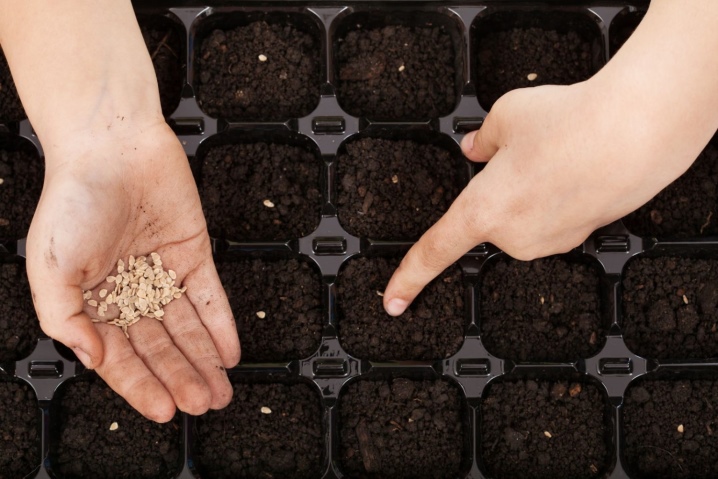
If at the time of transplanting seedlings into open ground there was a sharp drop in temperature, then it is better to leave young tomatoes at home until comfortable conditions. In order to restrain the growth of seedlings, in this situation it is necessary to lower the heating temperature of the premises to 19 degrees and significantly reduce watering.
By ripening period
When determining the timing of planting seeds, it is necessary to take into account the varietal characteristics, in particular, the ripening period. To do this, on the package of seedlings, you should find data on how many days the tomatoes will need to reach full ripeness, and add to this number 10-15 days required for seed germination and adaptation after the first pick.
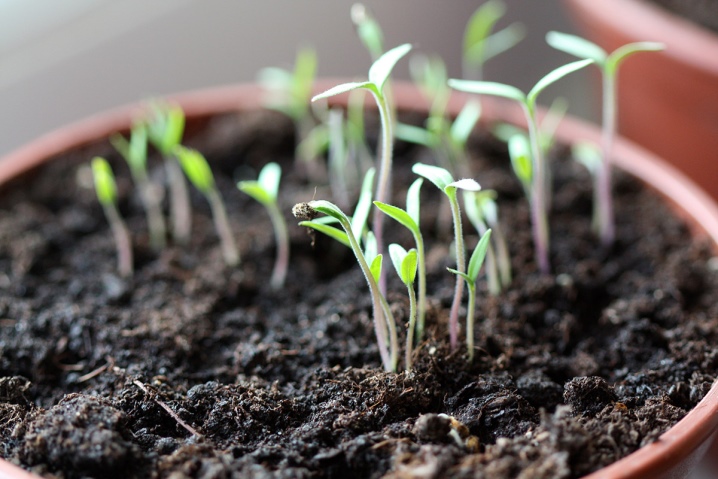
All tomatoes are divided into several groups according to the ripening period.
- Ultra-ripe - ripen in 40-50 days. Accordingly, planting in the ground is carried out at the age of 20-30 days.
- Early - it takes them 90–100 days to complete their growing cycle; they are transplanted into open ground at the age of 50–60 days.
- Medium early - from the moment of germination to harvest, they take from 100 to 105 days. This means that planting in the ground is carried out when 55–65 days are reached.
- Mid-season - ripen at the age of 105–120 days, they are transplanted into the ground 65–70 days after sowing.
- Late ripening - the harvest of these tomatoes can be harvested not earlier than in 120-130 days. Such bushes are planted in open ground when the seedlings are 70–80 days old.
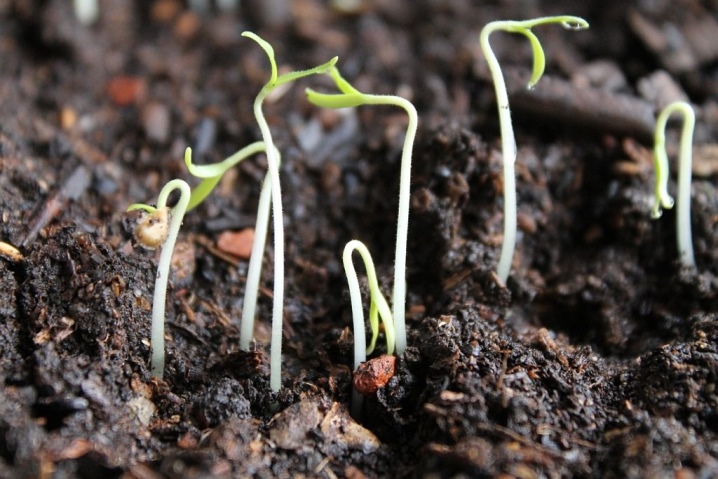
The calculation of the planting time is made taking into account the fact that for planting plants in open ground, the substrate must warm up to 12-13 degrees. The average daily temperature should be at least 14-16 degrees - in the central part of Russia this period corresponds to the end of May - beginning of June. If tomatoes are planted in greenhouses, then this is done 2-3 weeks earlier.
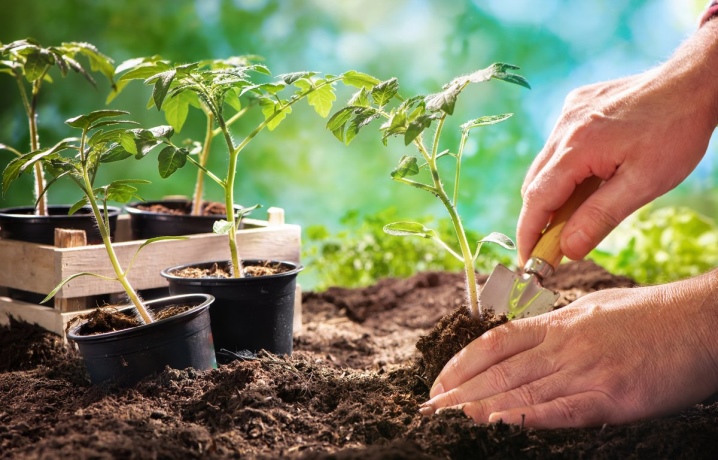
Thus, taking into account the weather forecast, it is necessary to determine what moment from the end of spring - beginning of summer will be the most favorable for planting. Based on this, the timing of sowing seeds for seedlings is calculated.
How to prepare the soil?
In order for the seedlings to develop healthy and strong, it is very important to properly prepare the substrate. The optimal soil for planting should be moisture-absorbing and always loose. Seeds germinate best in soils with neutral pH parameters.
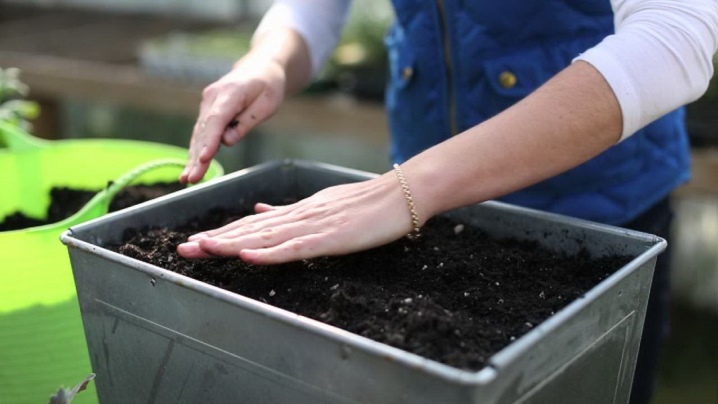
In any store for gardeners and gardeners, you can purchase ready-made potting soil. But if you wish, it is better to make it yourself. For this you will need:
- garden or forest land - 2 parts;
- compost / humus - 1 part;
- peat - 1 part;
- river sand - 1 part.
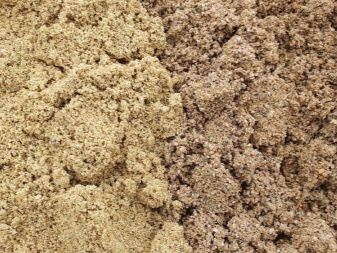
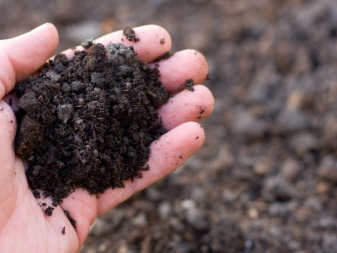
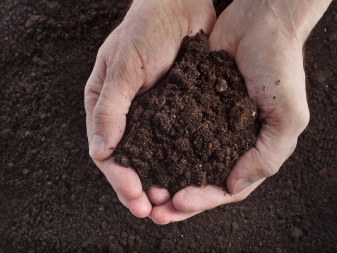

Try to add 500 g of ash powder to the prepared soil. This will make the mixture more nutritious and saturate with microelements useful for the growth and development of a young plant.
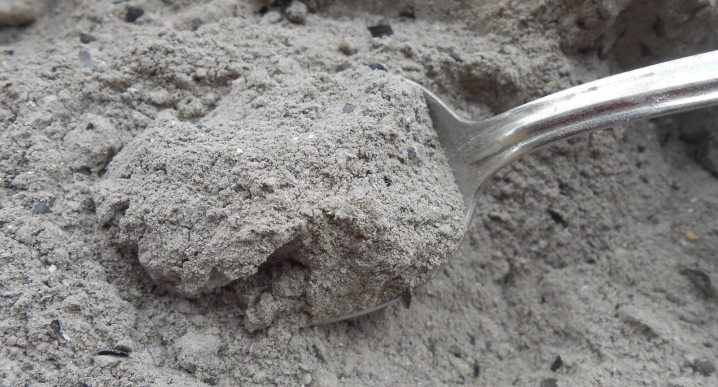
All major soil components must be free of any foreign matter and debris. It is important that it has a homogeneous structure.... A few days before planting, it is necessary to disinfect the substrate in order to destroy fungi and other pathogenic microflora. For this, the soil mixture is spilled with a pale solution of potassium permanganate or boiling water.
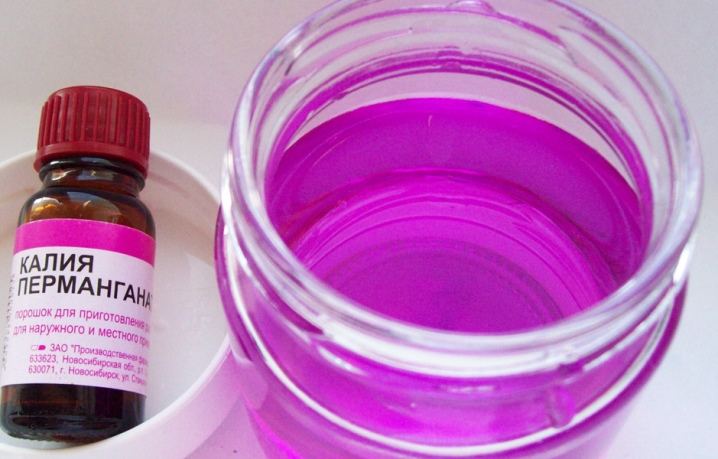
If time permits, for disinfection, you can additionally warm up the soil in the oven or steam it in a water bath for 30–40 minutes.
How do I prepare the seeds?
Experience shows that buying seeds, even in stores, does not always guarantee high quality of planting material. Some grains are likely to be empty. That is why, before planting seedlings, they carry out preliminary sorting.
To do this, take half a bowl of water and add a tablespoon of salt.The resulting solution is thoroughly mixed and all the acquired seeds are poured into it. Those that come up are empty, it makes no sense to plant them, you need to work with those seedlings that remain at the bottom. This procedure usually takes no more than a quarter of an hour - this time is quite enough for all the bad seeds to float up.
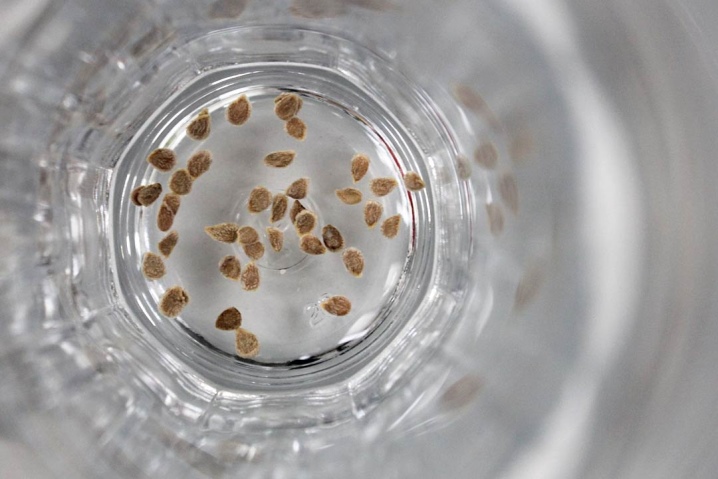
The next step in the preparation of the seed is its heat and power treatment. It allows you to activate grains that have been stored for many months in unheated warehouses. To do this, 3 weeks before sowing, it is necessary to place good seedlings near a heat source, for example, a radiator, but in no case on it.
The third step involves disinfection, that is, etching. The fact is that tomatoes are susceptible to viral, bacterial and fungal infections. At the same time, carriers of pathogens often remain on the skins of grains, and there are also clutches of insect pests invisible to the human eye. To neutralize them, the seedlings must be treated with special disinfectants. The greatest effect is obtained by keeping in a solution of "Chlorhexidine" for 30 minutes or treatment with "Fitosporin" for 2-3 hours. The first drug is used in pure form, the second is dissolved in water at the rate of 1 drop per 100 ml of water.
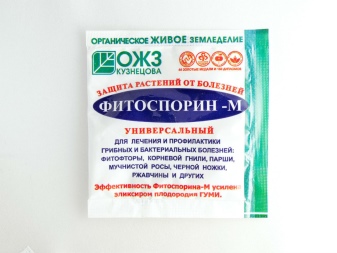
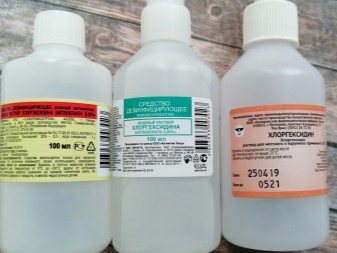
This is followed by the soaking stage... This measure softens the outer shell of the grains. You can soak seedlings in plain warm water, but adding Epin, Zircon or other growth stimulants will give the greatest effect. Some gardeners add hydrogen peroxide or aloe juice.
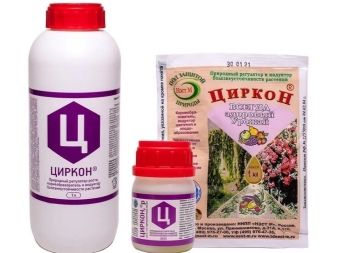
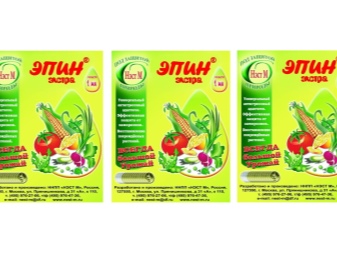
An alternative to soaking can be bubbling... This method is suitable for difficult-to-germinate tomato varieties. The essence of the technique is that all seedlings are placed in water, which is continuously saturated with air bubbles.
This treatment allows you to significantly soften the shell of the grains. In addition, the air washes away essential oils that inhibit the development of tomatoes.
Keep in mind: seeds subjected to bubbling germinate earlier, some varieties even for 7-10 days. For this procedure, you will need a compressor that will be responsible for saturating the water with oxygen, even an aquarium will do. All you need to do is just put room temperature water into a bowl, place the planting material there and lower the compressor tube. The bubbling of tomatoes is carried out for 16-18 hours.
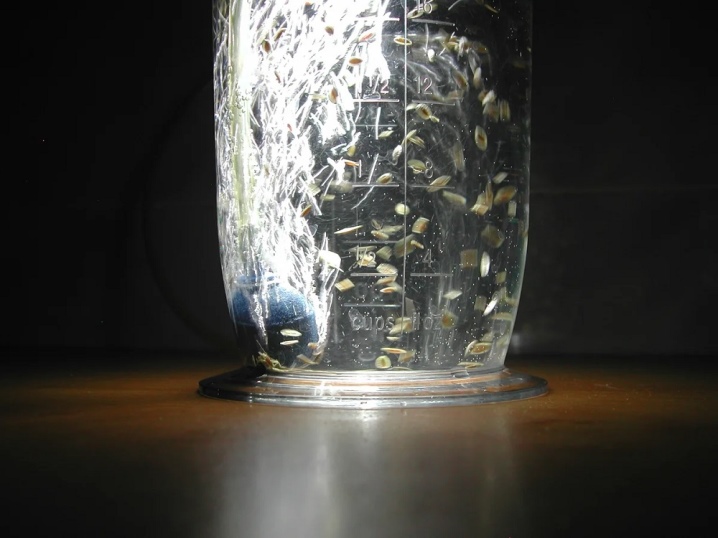
At the last stage of seedlings preparation, they are hardened.... It makes the culture more adaptable to weather changes and finally kills bacteria and viruses. The method consists in periodically exposing the seeds to cold, and then to heat.
After soaking, transfer the planting material to a clean, damp cloth and then into a container. Place the seeds on the bottom shelf of the refrigerator for 10-15 hours. After that, the seedlings need to be taken out and kept in a warm place for a day, at night, move them back to the refrigerator. The procedure is repeated for 5 days.

The ways
Experienced gardeners know about many different options for where to plant tomato seeds. They can be germinated in boxes, peat cups, peat pellets, plastic containers or special cassettes. Whichever method you choose, it is first of all important to ensure effective drainage. If we are talking about plastic boxes, then you have to make holes in the bottom, and then put expanded clay, crushed stone or crushed stone on top. This will allow excess moisture to be removed and thereby prevent putrefactive processes.
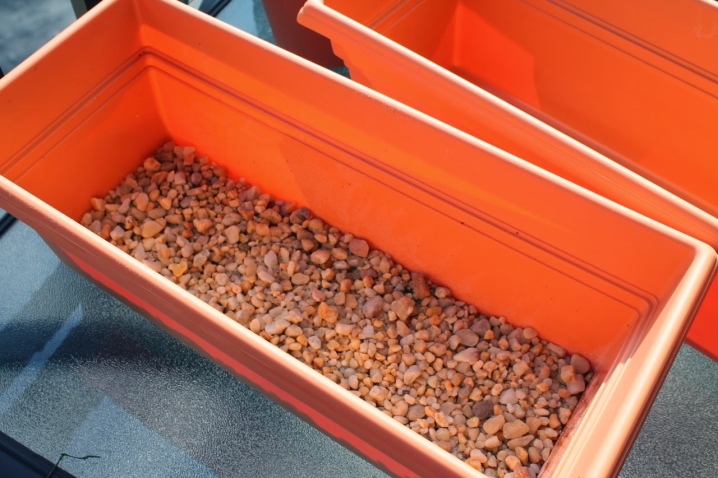
To the general box
Most often, tomato seeds are planted in a plastic container or wooden box. Leaving in this case is not particularly difficult. When all the seedlings are in one container, it is easier to water and move the young bushes.However, during such a planting, sooner or later there will be a need for a pick, since over time the plants will become cramped.
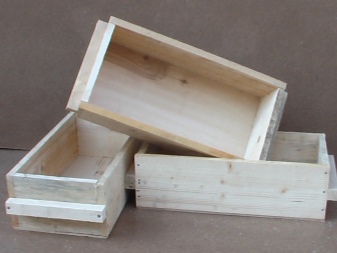
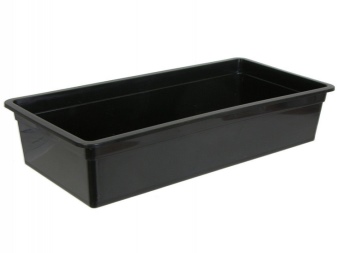
When choosing between plastic and wood, it is better to give preference to boxes made of polymer material. The plastic container can be quickly and easily washed with a soapy brush and disinfected.
The height of the containers should be 8–12 cm. The box is placed on a pallet. By the way, all excess moisture after moistening from the latter can be collected with a small syringe.
Planting in crates involves simple steps.
- A layer of expanded clay is laid at the bottom of the box, sprinkle with soil and lightly tamp.
- On the surface of the substrate, thin grooves with a depth of 1.5 cm are formed and plant seedlings in them with an interval of 2–3 cm. The distance between rows should be 4–5 cm.
- Please be aware that the less often the plants are located, the longer they will not need a pick after planting.
- Sprinkle seedlings with a thin layer of earth, irrigate from a spray bottle and tighten the container with film to create a greenhouse.

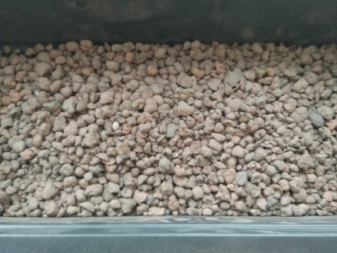
Into pills
You can find peat tablets in any shop for gardeners and gardeners; to grow seeds, you will need blanks with a diameter of 4–5 cm, as well as a container in which they will be placed. First, you need to put the tablets in a container and pour warm water inside each one - they do this gradually. As the tablets are moistened, they begin to swell, increase in size and soon turn into a kind of glass.
After that, one or two seeds are planted in the center and sprinkled with soil mixture. After that, it remains only to create a greenhouse and wait for the emergence of shoots. In phase 4 of these leaves, a dive is made from peat tablets into the ground.
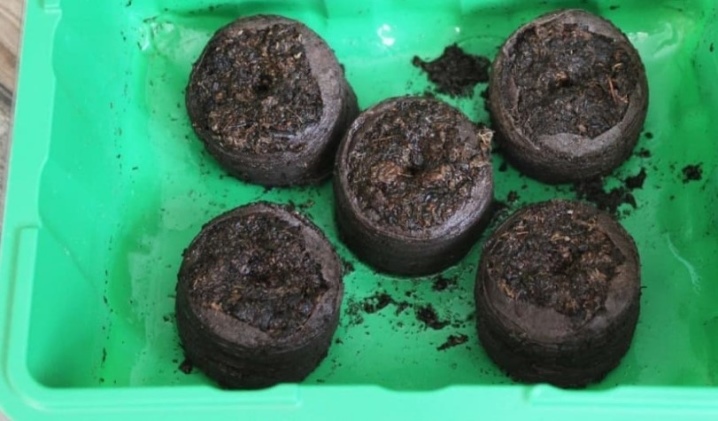
In peat pots
Peat pots are very popular. The advantage of germinating seeds in them is that you can subsequently transplant seedlings into the ground directly in cups. In general, this technology is no different from growing crops in boxes. You just need to form drainage holes, fill in a little expanded clay, add a prepared substrate, make a hole and plant 1-2 grains in it.
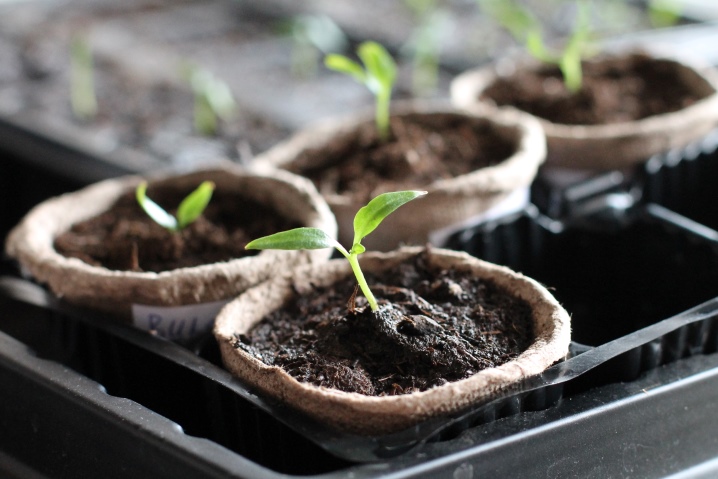
In the film
Planting seeds "in a snail" is a non-trivial and relatively new way to get tomato seedlings in an apartment. For this, a laminate backing is suitable, which is sold in the form of a long tape. With this method of sowing, very little land is required. The step-by-step instructions include several steps.
- First, the tape is spread on the table and 1 spoonful of the prepared soil mixture is laid out along the upper edge with small intervals.
- Plant seeds in the ground.
- Next, you need to carefully roll the tape into a roll and secure with a clerical elastic band.
- If desired, you can make several "snails" and place them for germination in a common container. This method is in demand when it is necessary to save footprint, and is suitable for beginners.

A similar technology is used for growing in diapers. In this case, instead of a tape, small pieces of a disposable sheet are used, it is folded into an envelope and also placed in a single container.
On toilet paper
When using toilet paper, you don't even need a primer. In this case, rolls can be made of toilet paper and ordinary plastic wrap. For work, you need to prepare several garbage bags, which are cut into strips.
Then everything is simple:
- toilet paper is placed on plastic wrap in 2-3 layers;
- moisten one edge with water and pour seedlings into it at a distance of 1 cm;
- then twist the roll, secure with an elastic band and place in a glass with the seedlings up;
- as soon as the first shoots appear, you can transplant them into the ground.
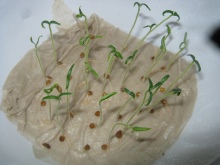
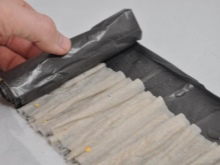
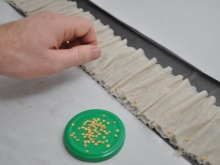
Other options
In recent years, soilless methods of planting tomatoes at home have become widespread. For this, vermiculite is used. It is relevant in cases where the gardener deliberately refuses any soil mixtures.To carry out the work, you need to pour vermiculite into the container, washed with cool water, and sow seeds on top. After that, you need to fill everything with water and gradually add a solution for bouquet hydroponics.
If everything is done correctly, the first shoots will appear in 5-7 days. A week later, it is necessary to increase the room temperature to 23-25 degrees. At the stage of cotyledon leaves, root nutrition begins, so it will be useful to make the first top dressing. From this moment, artificial lighting begins.
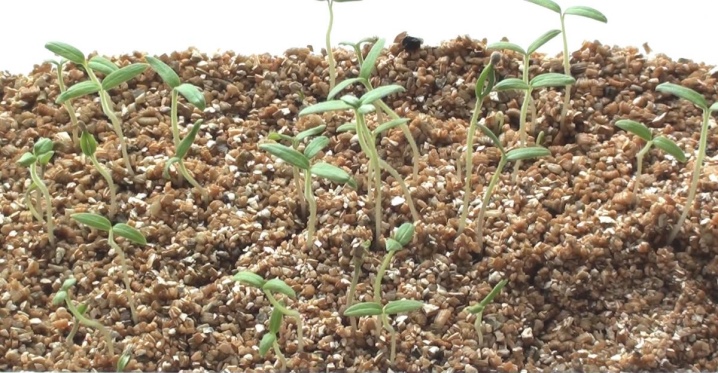
Sprouting seeds should be watered daily by drip.













The comment was sent successfully.